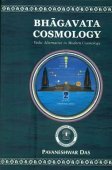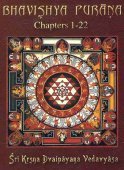Dakshinayana, Dakṣiṇāyana, Dakshina-ayana: 19 definitions
Introduction:
Dakshinayana means something in Hinduism, Sanskrit, the history of ancient India, Marathi, Hindi. If you want to know the exact meaning, history, etymology or English translation of this term then check out the descriptions on this page. Add your comment or reference to a book if you want to contribute to this summary article.
The Sanskrit term Dakṣiṇāyana can be transliterated into English as Daksinayana or Dakshinayana, using the IAST transliteration scheme (?).
Alternative spellings of this word include Dakshinayan.
In Hinduism
Purana and Itihasa (epic history)
Source: archive.org: Nilamata Purana: a cultural and literary studyDakṣiṇāyana (दक्षिणायन) is the name of a festival that once existed in ancient Kashmir (Kaśmīra) as mentioned in the Nīlamatapurāṇa.—Dakṣiṇāyana proceeds as folows: The southern progress of the sun is to be celebrated with gifts of ground and parched grains, snow, sugar, vegetables, umbrella, shoes etc. made to the Brāhmaṇas.
Source: Cologne Digital Sanskrit Dictionaries: The Purana IndexDakṣiṇāyana (दक्षिणायन).—The sun moves fast in;1 moves in the midst of Puṣkaradvīpa.2

The Purana (पुराण, purāṇas) refers to Sanskrit literature preserving ancient India’s vast cultural history, including historical legends, religious ceremonies, various arts and sciences. The eighteen mahapuranas total over 400,000 shlokas (metrical couplets) and date to at least several centuries BCE.
Jyotisha (astronomy and astrology)
Source: Wisdom Library: Brihat Samhita by VarahamihiraDakṣiṇāyana (दक्षिणायन) refers to the “southward march” (of the sun and moon), according to the Bṛhatsaṃhitā (chapter 5), an encyclopedic Sanskrit work written by Varāhamihira mainly focusing on the science of ancient Indian astronomy astronomy (Jyotiṣa).—Accordingly, “If the sun and moon should begin to be eclipsed when only half risen, deceitful men will suffer as well as sacrificial rites. [...] If the sun and moon should be eclipsed when in their uttarāyaṇa (northward march), the Brāhmins and the Kṣatriyas will suffer; if when in their dakṣiṇāyana (southward march) the Vaiśyas and the Śūdras will suffer. If the eclipse should commence at the northern, eastern, southern, or western point of the disc, the Brāhmins, the Kṣatriyas, the Vaiśyas or the Śūdras will suffer respectively”.
Source: Wikibooks (hi): Sanskrit Technical TermsDakṣiṇāyana (दक्षिणायन).—Sun's southward motion from summer solstice to winter solstice. Note: Dakṣiṇāyana is a Sanskrit technical term used in ancient Indian sciences such as Astronomy, Mathematics and Geometry.
Source: Shodhganga: Ajanta’s antiquity (jyotisha)Dakṣiṇāyana (दक्षिणायन).—Summer solstice is known as Dakṣiṇāyana or Karkaṭa-Saṃkrānti. The word Dakṣiṇāyana similarly came to be used in later period to designate the date of summer solstice.

Jyotisha (ज्योतिष, jyotiṣa or jyotish) refers to ‘astronomy’ or “Vedic astrology” and represents the fifth of the six Vedangas (additional sciences to be studied along with the Vedas). Jyotisha concerns itself with the study and prediction of the movements of celestial bodies, in order to calculate the auspicious time for rituals and ceremonies.
Ayurveda (science of life)
Source: gurumukhi.ru: Ayurveda glossary of termsDakṣiṇāyana (दक्षिणायन):—[dakṣiṇāyana/visargakāla] Souther solisitice - It indicates the decent of sun / movement of sun. this movement gives strength. movement which enhances āp principles and strength of all living beings is Visarga kala. Varsha, Sarat and Hemanta constitutes the Dakshinayan.

Āyurveda (आयुर्वेद, ayurveda) is a branch of Indian science dealing with medicine, herbalism, taxology, anatomy, surgery, alchemy and related topics. Traditional practice of Āyurveda in ancient India dates back to at least the first millenium BC. Literature is commonly written in Sanskrit using various poetic metres.
India history and geography
Source: Cologne Digital Sanskrit Dictionaries: Indian Epigraphical GlossaryDakṣiṇa-ayana.—(IA 19), the period during which the sun moves from south to north; cf. uttara-ayaṇa (IA 17). Note: dakṣiṇa-ayana is defined in the “Indian epigraphical glossary” as it can be found on ancient inscriptions commonly written in Sanskrit, Prakrit or Dravidian languages.

The history of India traces the identification of countries, villages, towns and other regions of India, as well as mythology, zoology, royal dynasties, rulers, tribes, local festivities and traditions and regional languages. Ancient India enjoyed religious freedom and encourages the path of Dharma, a concept common to Buddhism, Hinduism, and Jainism.
Languages of India and abroad
Marathi-English dictionary
Source: DDSA: The Molesworth Marathi and English Dictionarydakṣiṇāyana (दक्षिणायन).—n (S) The southing or southerly declination of the sun &c.
Source: DDSA: The Aryabhusan school dictionary, Marathi-Englishdakṣiṇāyana (दक्षिणायन).—n The southerly declination of the sun, &c.
Marathi is an Indo-European language having over 70 million native speakers people in (predominantly) Maharashtra India. Marathi, like many other Indo-Aryan languages, evolved from early forms of Prakrit, which itself is a subset of Sanskrit, one of the most ancient languages of the world.
Sanskrit dictionary
Source: DDSA: The practical Sanskrit-English dictionaryDakṣiṇāyana (दक्षिणायन).—the sun's progress south of the equator, the half year in which the sun moves from the north to the south, the winter solstice; सर्वेऽश्वमेधैरीजानास्तेऽ न्वयुर्दक्षिणायनम् (sarve'śvamedhairījānāste' nvayurdakṣiṇāyanam) Mahābhārata (Bombay) 12.29.13. रात्रिः स्याद्दक्षिणायनम् (rātriḥ syāddakṣiṇāyanam) Manusmṛti 1.67; Bhāgavata 5.21.3.
Derivable forms: dakṣiṇāyanam (दक्षिणायनम्).
Dakṣiṇāyana is a Sanskrit compound consisting of the terms dakṣiṇa and ayana (अयन).
Source: Cologne Digital Sanskrit Dictionaries: Shabda-Sagara Sanskrit-English DictionaryDakṣiṇāyana (दक्षिणायन).—n.
(-naṃ) The suns progress towards the south of the equator, the winter solstice. E. dakṣiṇa, and ayana going.
Source: Cologne Digital Sanskrit Dictionaries: Benfey Sanskrit-English DictionaryDakṣiṇāyana (दक्षिणायन).—I. n. the half of the year when the sun moves to the south of the equator, [Mānavadharmaśāstra] 1, 67. Ii. adj. lying on the course of the sun to the south of the equator, [Bhāgavata-Purāṇa, (ed. Burnouf.)] 5, 23, 5.
Dakṣiṇāyana is a Sanskrit compound consisting of the terms dakṣiṇā and ayana (अयन).
Source: Cologne Digital Sanskrit Dictionaries: Cappeller Sanskrit-English DictionaryDakṣiṇāyana (दक्षिणायन).—[neuter] the southern progress (of the sun), the summer.
Source: Cologne Digital Sanskrit Dictionaries: Monier-Williams Sanskrit-English Dictionary1) Dakṣiṇāyana (दक्षिणायन):—[from dakṣiṇa > dakṣ] a n. ‘southward way’, way to Yama’s quarter, [Mahābhārata xii, 996]
2) [v.s. ...] ‘sun’s progress south of the equator’, the winter half-year, [Gautama-dharma-śāstra; Manu-smṛti i, 67; Mahābhārata; Varāha-mihira’s Bṛhat-saṃhitā; Pañcatantra; Bhāgavata-purāṇa v, 21, 3]
3) [v.s. ...] b mfn. situated in the sun’s winter course (as an asterism), [23, 5 f.]
Source: Cologne Digital Sanskrit Dictionaries: Yates Sanskrit-English DictionaryDakṣiṇāyana (दक्षिणायन):—[dakṣiṇā+yana] (naṃ) 1. n. Sun’s southern course; winter solstice.
[Sanskrit to German]
Sanskrit, also spelled संस्कृतम् (saṃskṛtam), is an ancient language of India commonly seen as the grandmother of the Indo-European language family (even English!). Closely allied with Prakrit and Pali, Sanskrit is more exhaustive in both grammar and terms and has the most extensive collection of literature in the world, greatly surpassing its sister-languages Greek and Latin.
Hindi dictionary
Source: DDSA: A practical Hindi-English dictionaryDakṣiṇāyana (दक्षिणायन) [Also spelled dakshinayan]:—(nm) the movement of the sun to the south of the equator; the period of six months called the winter solstice; (a) gone south.
...
Kannada-English dictionary
Source: Alar: Kannada-English corpusDakṣiṇāyaṇa (ದಕ್ಷಿಣಾಯಣ):—[noun] = ದಕ್ಷಿಣಾಯನ [dakshinayana].
--- OR ---
Dakṣiṇāyana (ದಕ್ಷಿಣಾಯನ):—[noun] the time when the sun changes the direction of his apparent journey at the Tropic of Capricorn (23o26' south of the celestial equator).
Kannada is a Dravidian language (as opposed to the Indo-European language family) mainly spoken in the southwestern region of India.
See also (Relevant definitions)
Partial matches: Dakshina, Ayana.
Starts with: Dakshinayanamarga.
Full-text (+44): Uttarayana, Yamyayana, Ayana, Takshinayanam, Karkatasankranti, Karkatasamkranti, Takkanayanam, Udagayana, Karkataka, Laukikamana, Divyamahoratra, Takshinayana-punniyakalam, Brahmandapurana, Dakshinayan, Visargakala, Pitriyana, Komnijavada, Gunapura, Kodavalli, Vamiyena.
Relevant text
Search found 47 books and stories containing Dakshinayana, Dakshina-ayana, Dakṣiṇa-ayana, Daksina-ayana, Dakṣiṇā-ayana, Dakṣiṇāyana, Daksinayana, Dakṣiṇāyaṇa; (plurals include: Dakshinayanas, ayanas, Dakṣiṇāyanas, Daksinayanas, Dakṣiṇāyaṇas). You can also click to the full overview containing English textual excerpts. Below are direct links for the most relevant articles:
Amarakoshodghatana of Kshirasvamin (study) (by A. Yamuna Devi)
Day and night for the Manes, Gods and Brahma < [Chapter 3 - Social Aspects]
Shrimad Bhagavad-gita (by Narayana Gosvami)
Verse 8.25 < [Chapter 8 - Tāraka-brahma-yoga (the Yoga of Absolute Deliverance)]
Manusmriti with the Commentary of Medhatithi (by Ganganatha Jha)
Verse 1.67 < [Section XXXIX - ‘Day’ and ‘Night’ of the ‘Gods’]
Verse 6.10 < [Section III - Details of the Hermit’s Life]
Puranic encyclopaedia (by Vettam Mani)
The Devi Bhagavata Purana (by Swami Vijñanananda)
Chapter 17 - On the Dhruva Maṇḍalam < [Book 8]
Chapter 14 - On the description of the Lokāloka space < [Book 8]
Chapter 4 - On Gāyatrī Hridaya < [Book 12]
The Bhagavata Purana (by G. V. Tagare)
Chapter 23 - Description of Viṣṇupada (the position of Dhruva) and Śiśumāra-cakra < [Book 5 - Fifth Skandha]
Chapter 21 - The Stellar Region < [Book 5 - Fifth Skandha]
Chapter 15 - Exposition of right Conduct (Concluded) < [Book 7 - Seventh Skandha]
Related products


